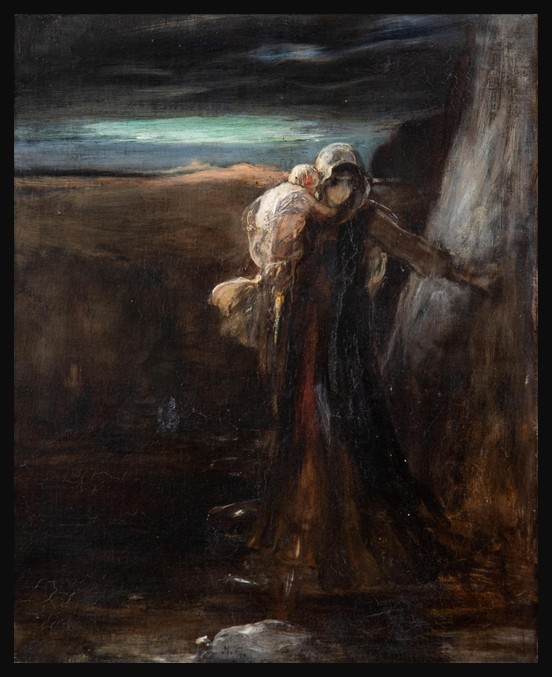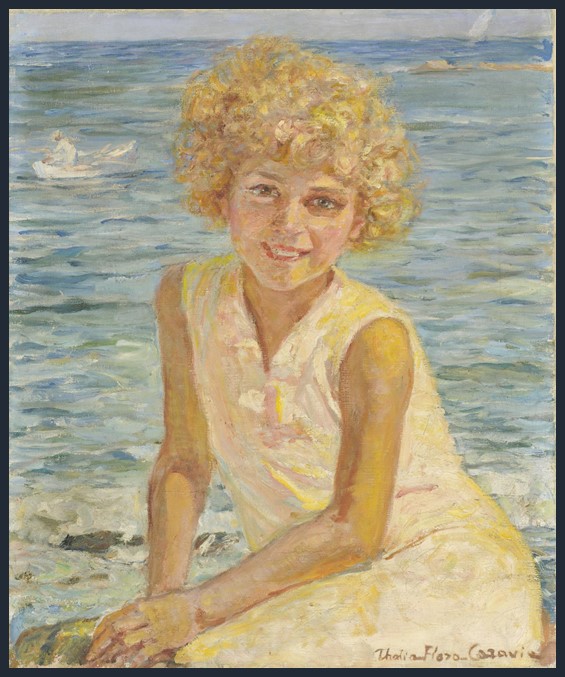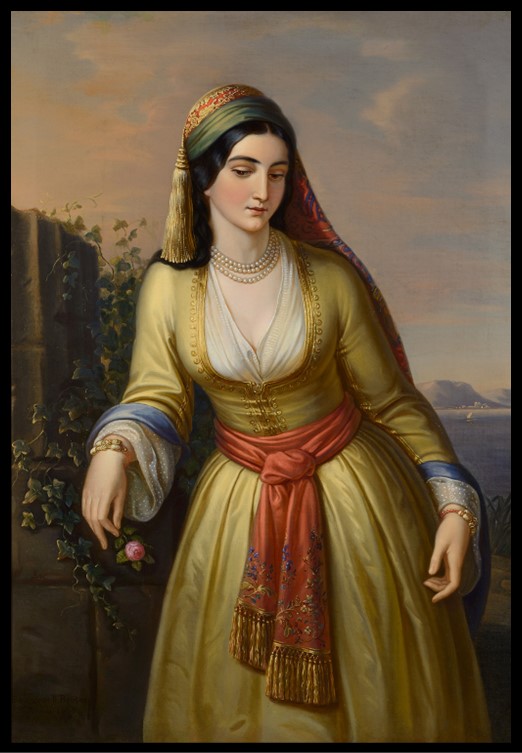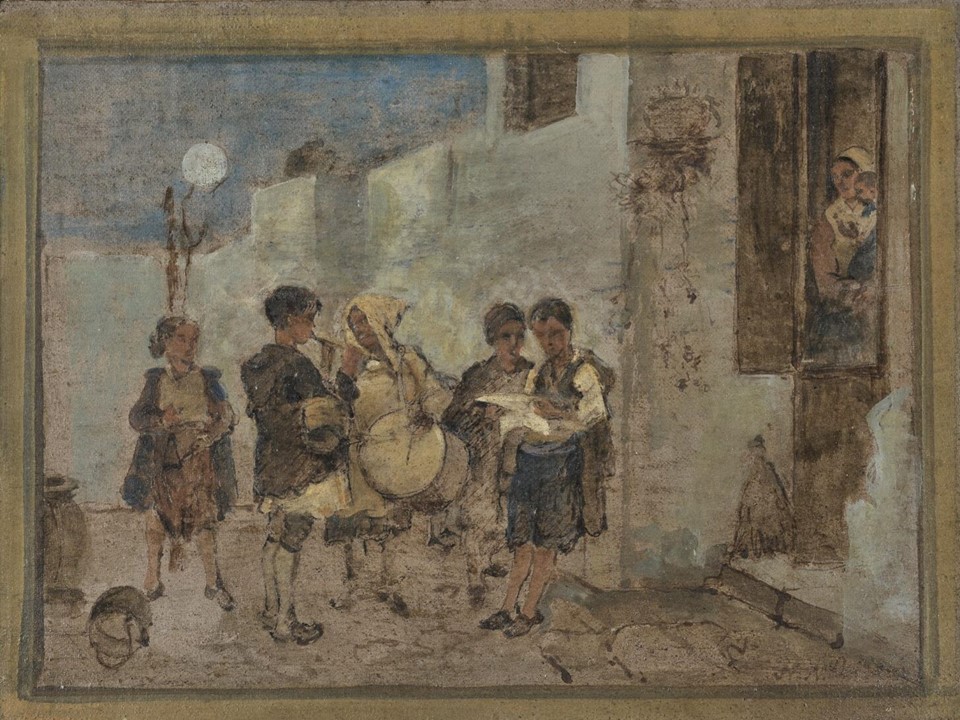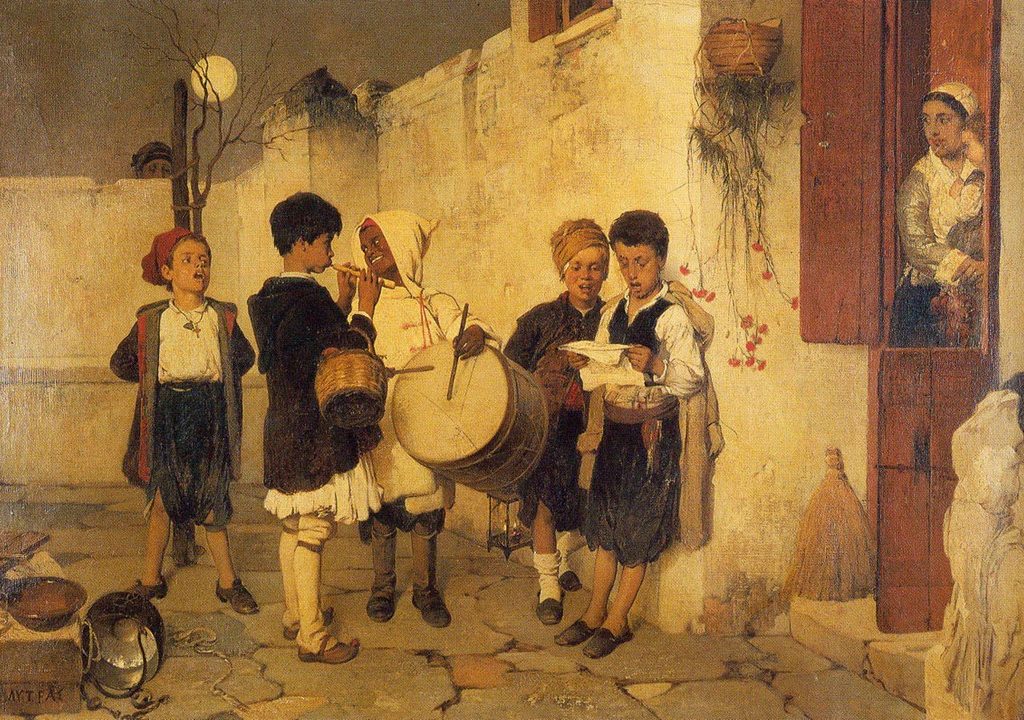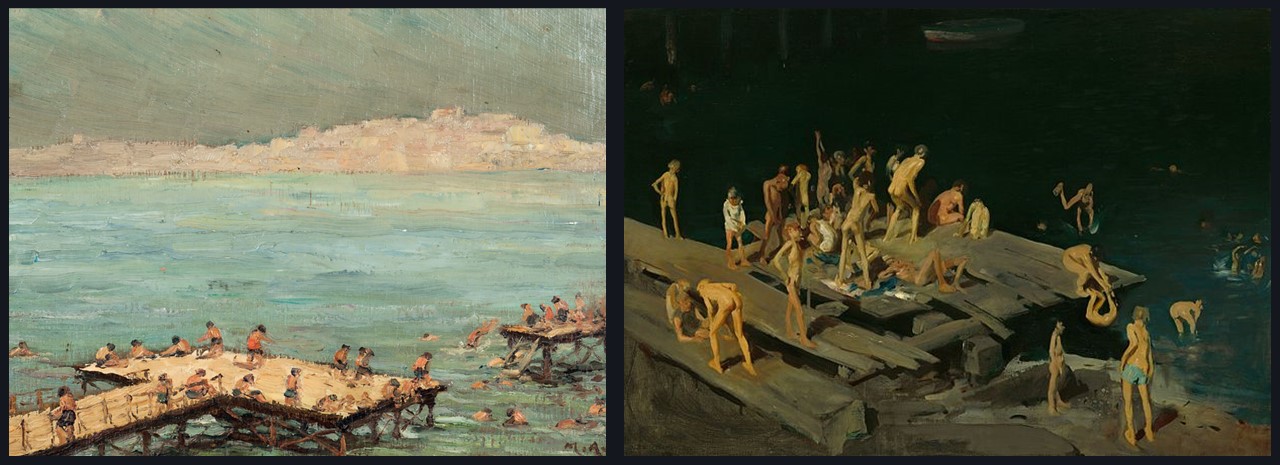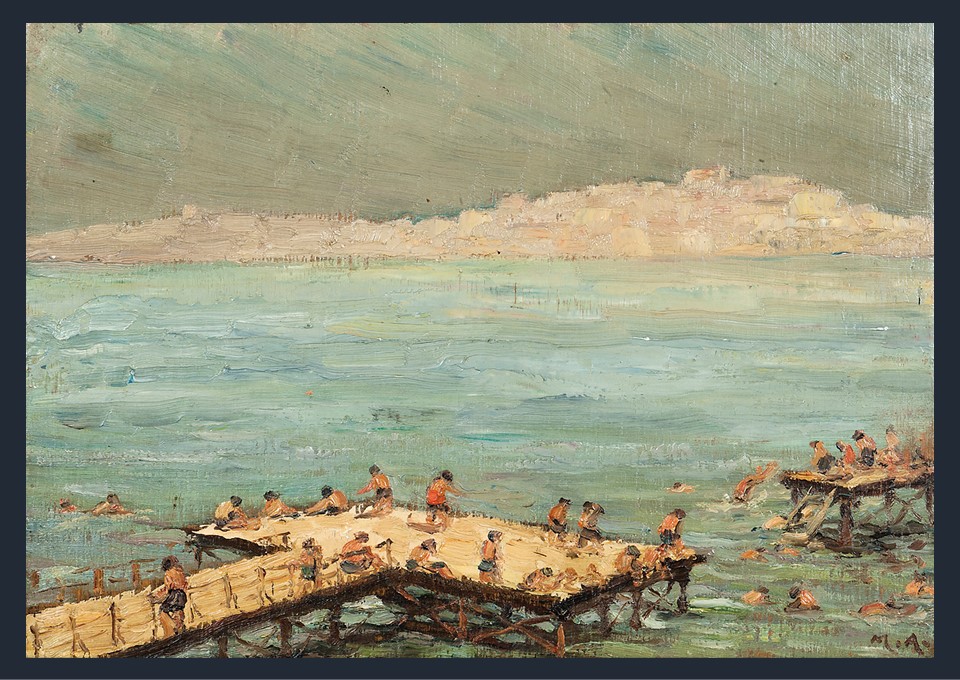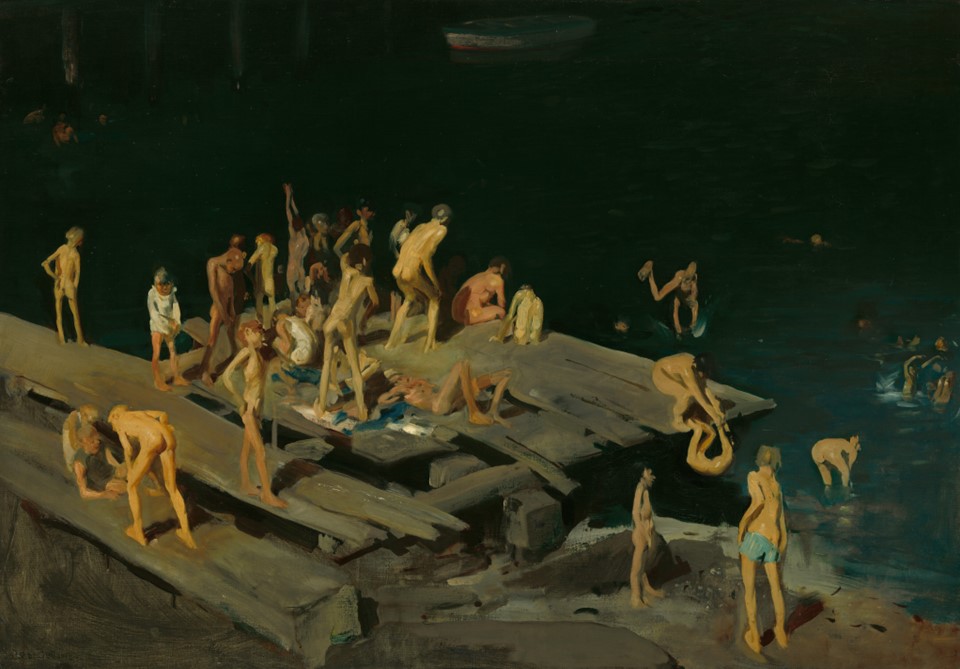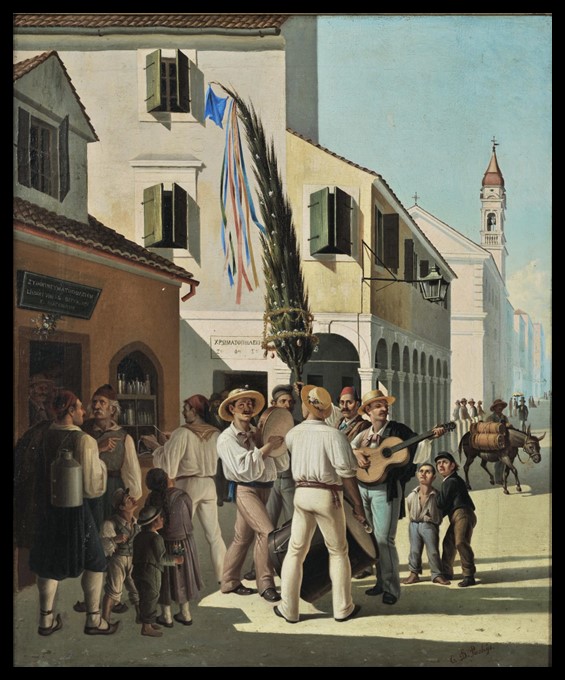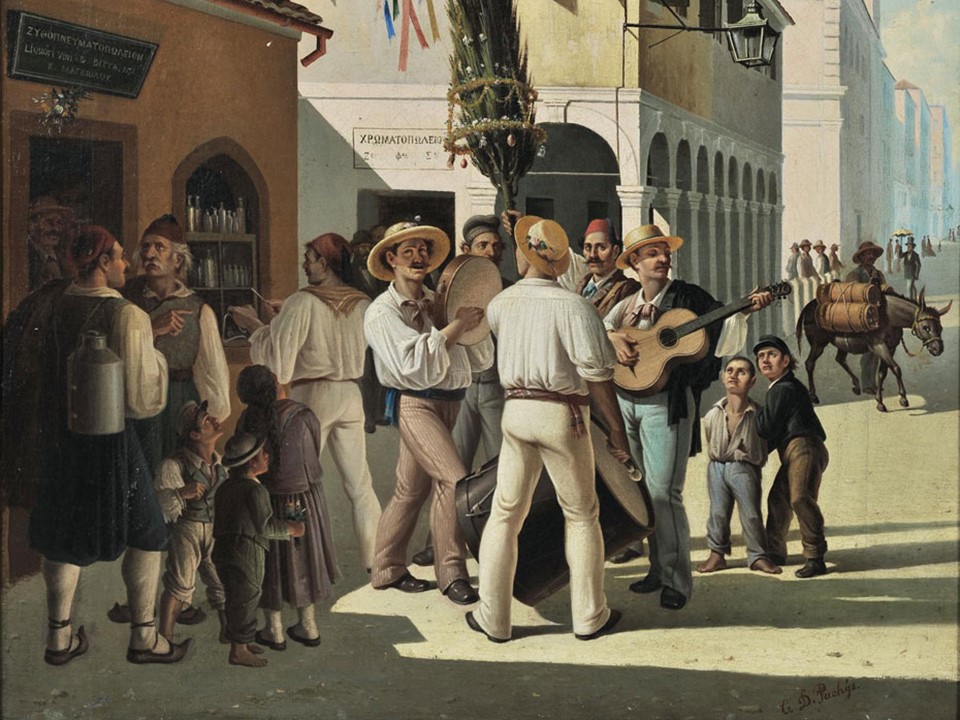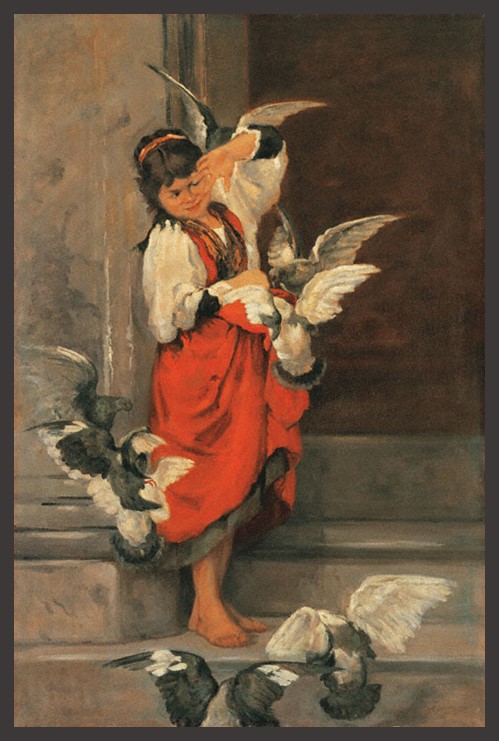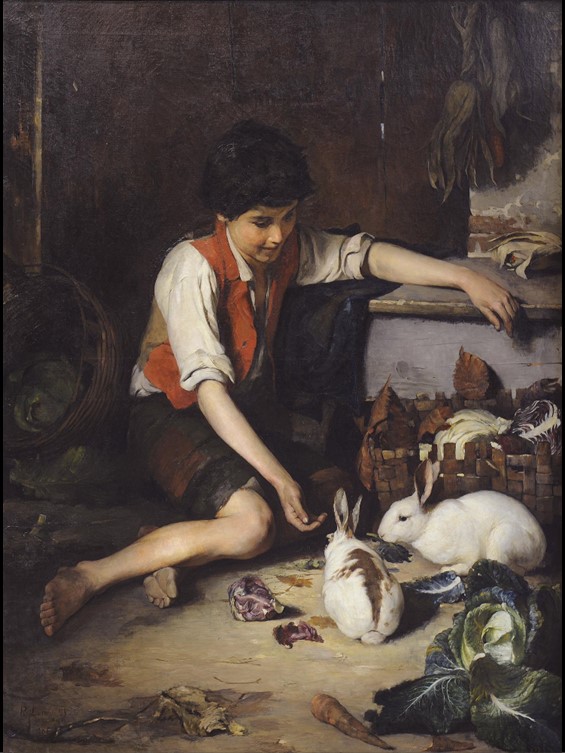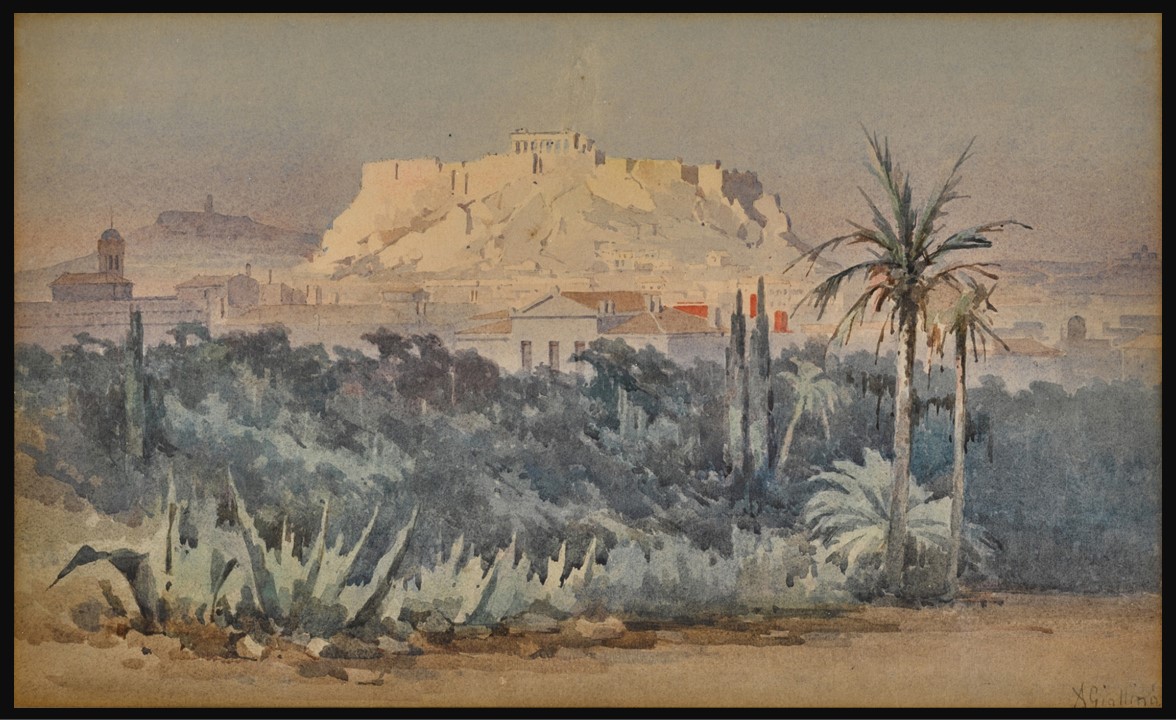
The Parthenon, Watercolour over Pencil, 273 by 455 mm, Private Collection
https://www.sothebys.com/en/buy/auction/2024/royal-noble/the-parthenon?locale=en
In his approach to the Parthenon, Angelos Giallinas (1857–1939), a prominent Greek watercolorist of the late 19th and early 20th centuries, not only portrayed the monument as an architectural subject but elevated it to a lyrical symbol of Greek heritage. His work, deeply connected to the theme of Light, Memory, and Reverence, reflects a profound sensitivity to the interplay between the ancient ruins and the surrounding natural environment. Born in Corfu, Giallinas studied at the local School of Fine Arts before continuing his education in Venice, Naples, and Rome. There, he absorbed the refined tonalities of the Italian landscape tradition, which he later fused with a uniquely Greek sensibility rooted in poetic realism and national pride.
Giallinas’s depictions of the Parthenon are marked by a restrained yet evocative use of watercolor. He did not aim for archaeological precision but instead emphasized the atmospheric qualities of the scene, the golden hues of Attic sunlight, the gradations of the Athenian sky, and the quiet dialogue between the ruins and the surrounding landscape. This impressionistic approach aligned with European aesthetic movements of his time while remaining deeply connected to the emotional resonance of place and memory in Greek culture.
Throughout his career, Giallinas gained significant recognition both at home and abroad. He held successful exhibitions across Europe, including in London, where his work attracted the attention of collectors and critics. In 1902, he was commissioned by the British royal family to create a series of Greek landscapes, further elevating his international profile. He played a pivotal role in legitimizing watercolor as a medium for serious artistic expression within Greek art, moving beyond its traditional role as a preparatory tool.
Technically, Giallinas mastered watercolor’s fluidity and transparency with exceptional subtlety. His brushwork was controlled yet expressive, employing translucent washes to create depth without sacrificing luminosity. He avoided harsh contrasts, favoring gradations of color that conveyed a meditative stillness. In his hands, watercolor became a means not just of depiction, but of evocation—his skies, seas, and stones imbued with feeling as much as form.
Crucially, Giallinas’s art reflects the broader cultural currents of post-independence Greece, where landscape painting became a vehicle for expressing national identity. His serene views of the Parthenon and other iconic sites participated in the 19th-century project of reconnecting modern Greece to its classical past. Yet his interpretation was not triumphant or didactic; instead, it was introspective and elegiac. By rendering these monuments with atmospheric sensitivity rather than monumental grandeur, Giallinas offered a vision of Greece that was rooted in continuity, memory, and quiet resilience—qualities that resonated deeply in a society still defining itself between antiquity and modernity.
When I look at Giallinas’s paintings of the Parthenon, I’m struck by their quiet power. There’s no theatrical drama, no exaggerated gesture—just a deep, contemplative calm. He treats the monument not as a tourist spectacle but as something intimate: a memory held in light and stone. The watercolor bleeds gently around the contours of the ruins, dissolving into the pale Athenian sky, as if he’s painting not only what he sees but what he feels. The Parthenon appears suspended in time, drifting between history and the present. Giallinas’s brush whispers rather than declares—and in that quietness, he captures something enduring, something essentially Greek.
For a Student Activity, inspired by Angelos Giallinas’s interpretation of the Parthenon, please… Check HERE!
You can view a former Teacher-Curator BLOG POST titled ‘Garden in Corfu by Angelos Giallinas’… https://www.teachercurator.com/art/garden-in-corfu-by-angelos-giallinas/?fbclid=IwY2xjawKIGElleHRuA2FlbQIxMABicmlkETF5ZWtES1JYMDBPQVY5c055AR7-a8br2Ukq3ahJuUCSU0eESsf5WwODDQtNdgSK0kYgNnSS856uiARVWSentw_aem_T8IM2xzIAGQQEC4qcWajdQ
Bibliography: https://corfuguidedtours.com/a-renowned-painters-historic-mansion/?utm_source=chatgpt.com and https://haaa.gr/news/en_30.php?utm_source=chatgpt.com
